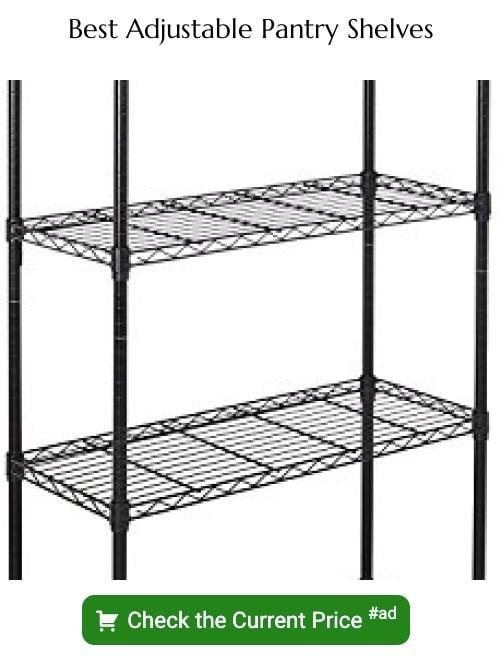Last updated on
Discover the secrets to perfectly spaced pantry shelves that maximize storage and organization in your kitchen, with our expert tips and advice.
Having a well-organized pantry is a dream for many homemakers. It not only saves time and effort but also adds to the aesthetic appeal of your kitchen.
However, organizing a pantry can be daunting, especially when it comes to spacing the shelves. You may have wondered how much space you should leave between each shelf or if there is any specific rule to follow.
In this article, we will dive into the world of pantry shelves spacing and provide you with all the information you need to create an organized and functional pantry space. So let’s get started!
Understanding Pantry Shelf Spacing
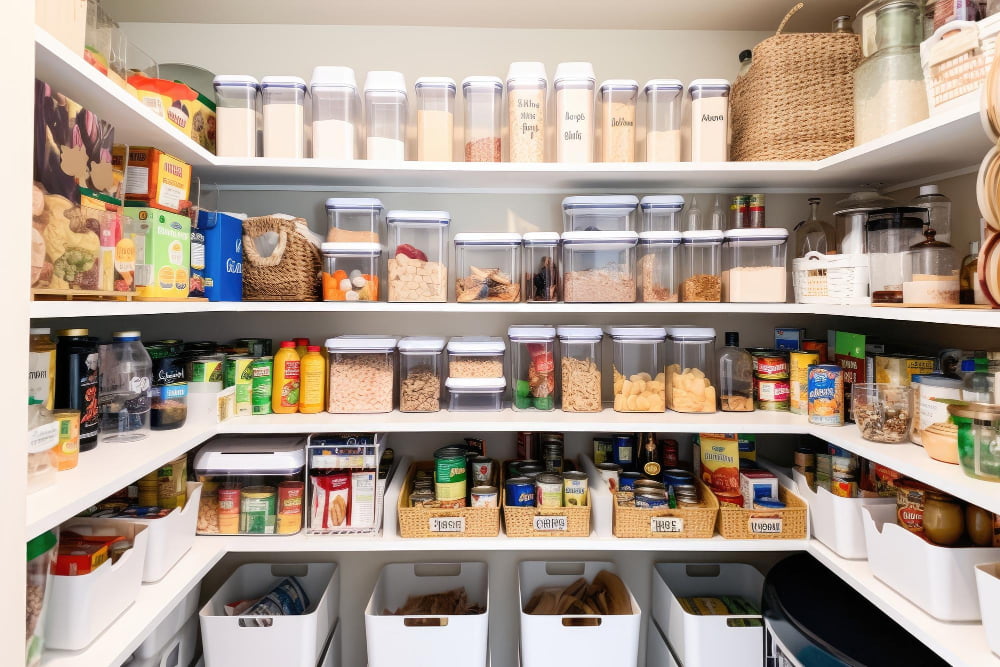
When it comes to pantry shelf spacing, there is no one-size-fits-all solution. The ideal spacing will depend on the size and shape of your pantry, as well as the types of items you plan to store.
However, understanding some basic principles can help you determine what will work best for your space.
Firstly, consider how much vertical space each item requires. For example, if you have a lot of tall bottles or containers that need to stand upright on shelves without tipping over or getting squished by other items above them – then taller shelves may be necessary.
Secondly, think about how frequently you use certain items in your pantry and where they should be placed for easy access. Items that are used more often should be stored at eye level or within arm’s reach while less frequently used ones can go higher up.
Lastly but not least important is safety; ensure that heavy objects are placed on lower shelves so they don’t fall off when someone reaches for something else above them.
Determining the Ideal Shelf Layout
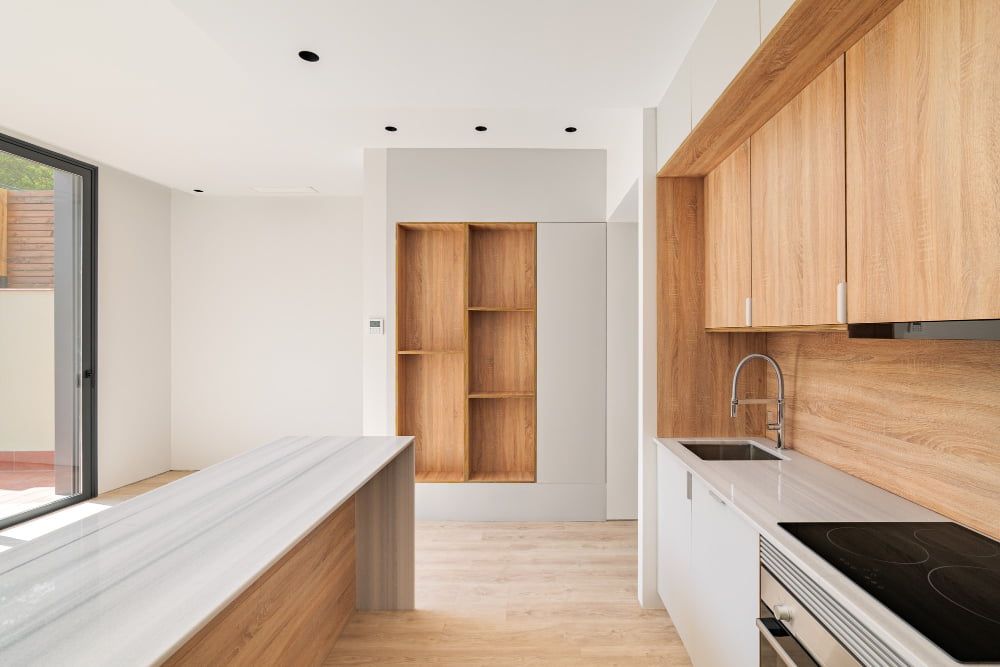
Firstly, you need to assess the size and shape of your pantry space. If you have a small or narrow pantry, then having fewer shelves with more spacing between them may be more practical than having many closely spaced shelves that make it difficult to access items.
Secondly, think about what types of items you will be storing in your pantry and how frequently they will be used. For example, if you plan on storing heavy appliances or large containers like bags of flour or sugar on your shelves, then ensuring that they are placed at an appropriate height is crucial for easy accessibility.
Lastly, consider any additional features such as drawers or baskets that can help maximize storage space while keeping everything organized and easily accessible.
Knowing Standard Shelf Spacing
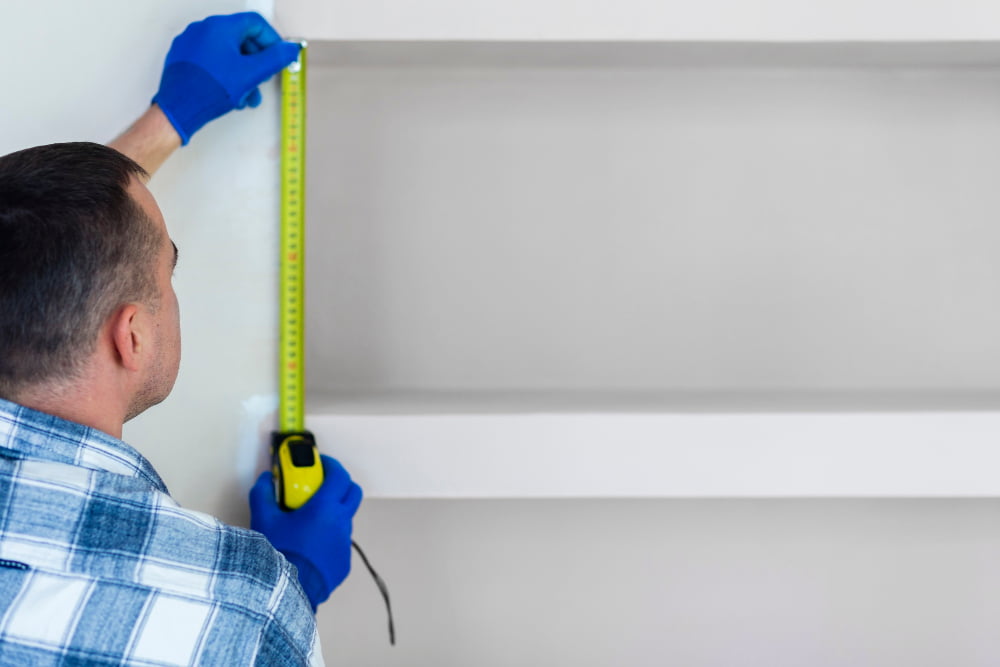
The distance between each shelf should be at least 12 inches or more, depending on the height of your tallest item. This measurement allows for easy access and visibility of items on each shelf.
The space between the top shelf and ceiling should be around 6-8 inches to prevent dust accumulation in hard-to-reach areas. Similarly, leave a gap of about 2-3 inches from the bottom shelf to allow for proper ventilation and cleaning.
It’s important to note that these measurements may not work for everyone as every household has different needs based on their lifestyle habits and storage requirements. Therefore, customizing your pantry shelves according to your specific needs is crucial in achieving an organized space that works best for you.
Customizing Shelf Spacing According to Your Needs
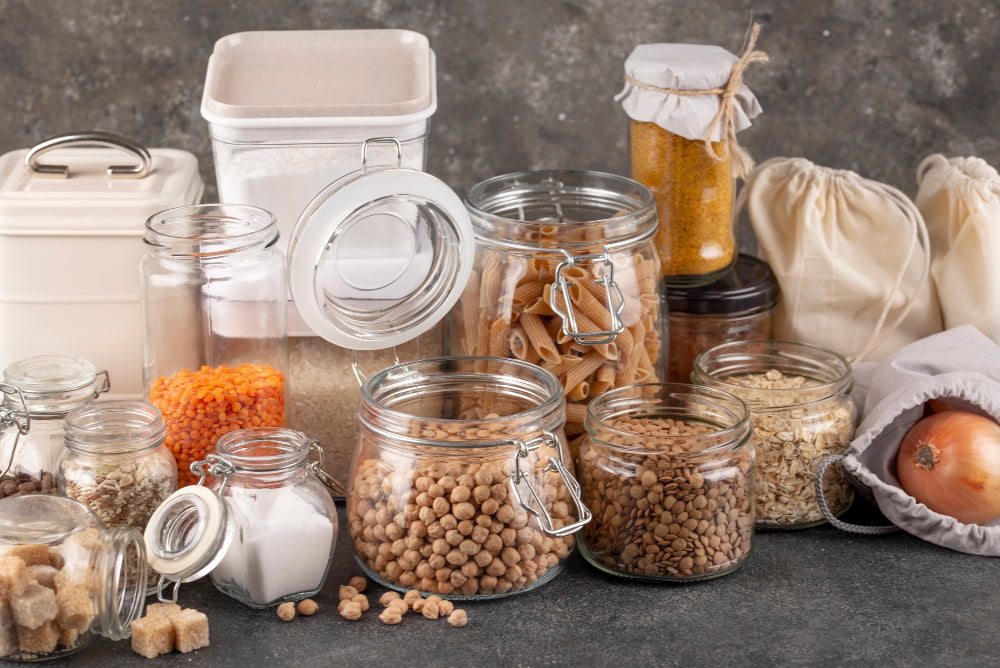
The ideal shelf layout depends on your specific needs and the types of items you plan to store in your pantry. Customizing the spacing between shelves can help maximize storage space and make it easier for you to access items.
Consider what types of food or kitchen supplies you will be storing in your pantry. For example, if you frequently buy bulkier items like cereal boxes or large bags of flour, then taller shelves with more space between them may be necessary.
On the other hand, if most of your pantry staples are smaller jars or cans that can fit easily on shorter shelves, then closer together shelving may work better for maximizing storage capacity.
Another factor to consider when customizing shelf spacing is how often certain items will need to be accessed. If a particular item is used frequently throughout the week (such as snacks), placing those at eye level makes sense so they’re easy-to-reach without having too much bending down involved.
Measuring Your Pantry Dimensions
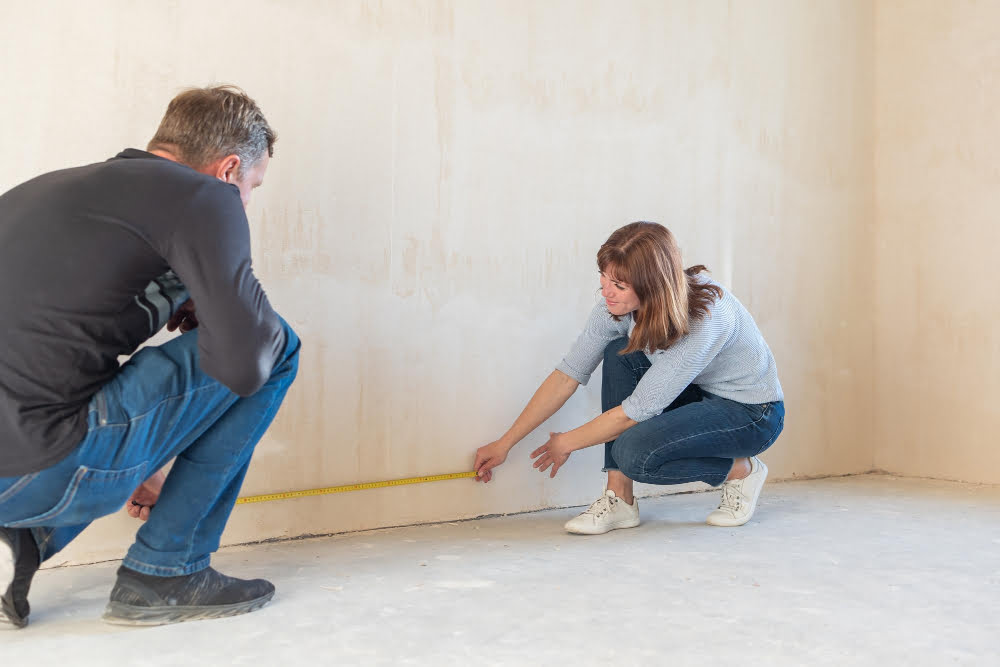
This step is crucial as it will help you determine how many shelves you can fit and how much space should be between each shelf. Start by measuring the height, width, and depth of your pantry using a tape measure or ruler.
Be sure to take into account any obstructions such as light fixtures or vents that may affect shelf placement.
Once you have measured the dimensions of your pantry accurately, consider what items need storage in there so that they can guide where to place each shelf. For example, if most items are tall jars or cereal boxes then more vertical space would be needed than horizontal one.
Deciding Between Adjustable and Fixed Shelves
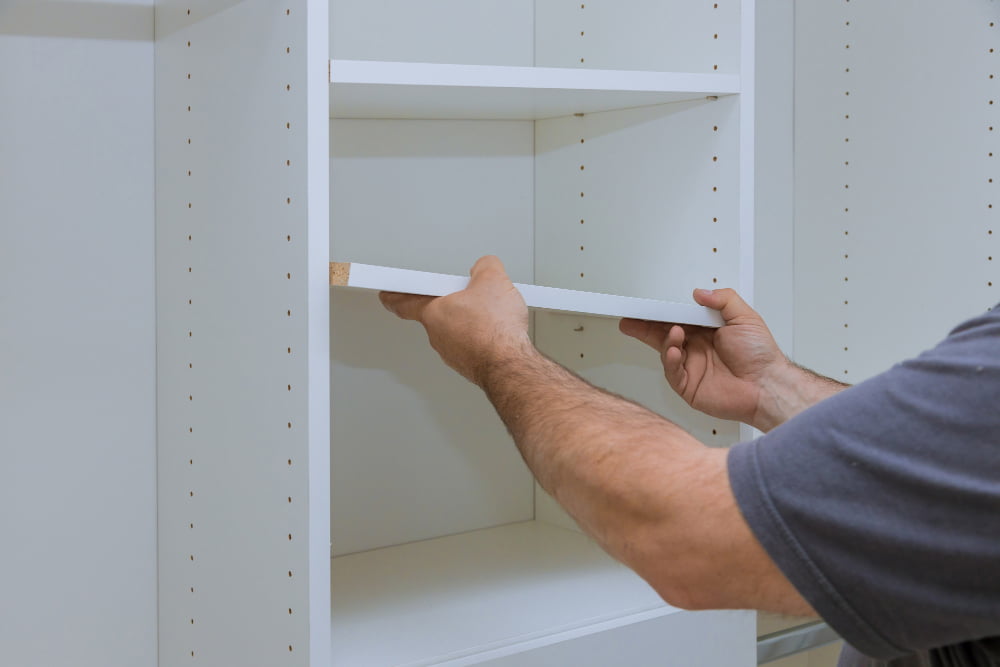
Adjustable shelves are versatile and can be moved up or down according to your needs. They allow for more flexibility in organizing items of different sizes and shapes, making them a popular choice for many homeowners.
On the other hand, fixed shelves provide stability and support for heavier items such as canned goods or appliances.
Deciding between adjustable and fixed shelves depends on your personal preference as well as the types of items you plan to store in your pantry. If you frequently change the layout of your pantry or need space for larger items like kitchen appliances, then adjustable shelving may be a better option.
However, if you prefer a more stable storage solution that can handle heavy loads without sagging over time, then fixed shelving is likely the way to go.
Ultimately it’s important to consider both options carefully before making a decision on which type of shelf will work best in your particular situation.
Evaluating Shelf Materials and Durability
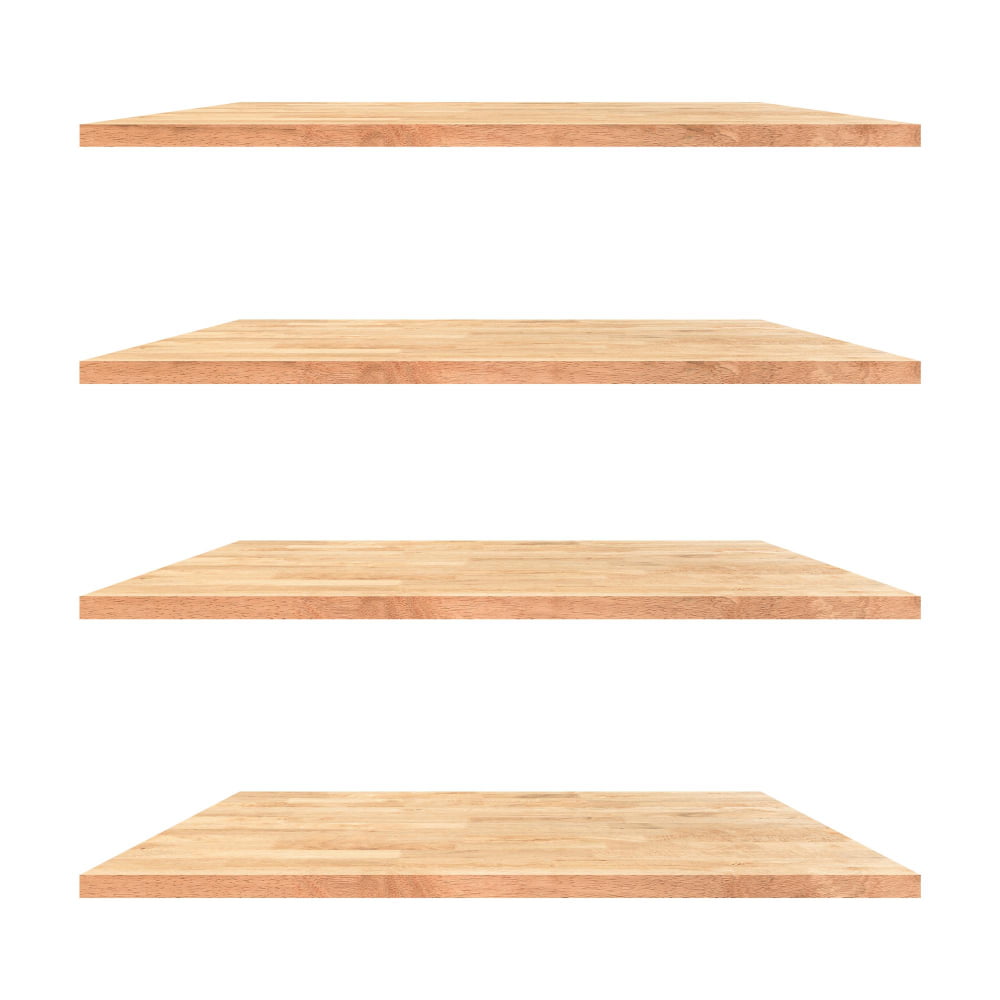
The most common materials used for pantry shelves are wood, wire, metal, and plastic. Each material has its own advantages and disadvantages that you should consider before making a decision.
Wooden shelves are sturdy and can hold heavy items but require regular maintenance to prevent warping or splitting due to moisture exposure. Wire shelving is lightweight but may not be suitable for storing small items as they can fall through the gaps between wires.
Metal shelving is durable but prone to rusting if exposed to moisture or humidity over time. Plastic shelving is affordable and easy-to-clean; however, it may not be strong enough for heavier loads.
Consider your budget as well as your storage needs when evaluating shelf materials. If you plan on storing heavy cans or appliances in your pantry then wooden or metal shelves might be a better option than plastic ones which could buckle under weight pressure over time.
Assessing and Accommodating Common Pantry Items
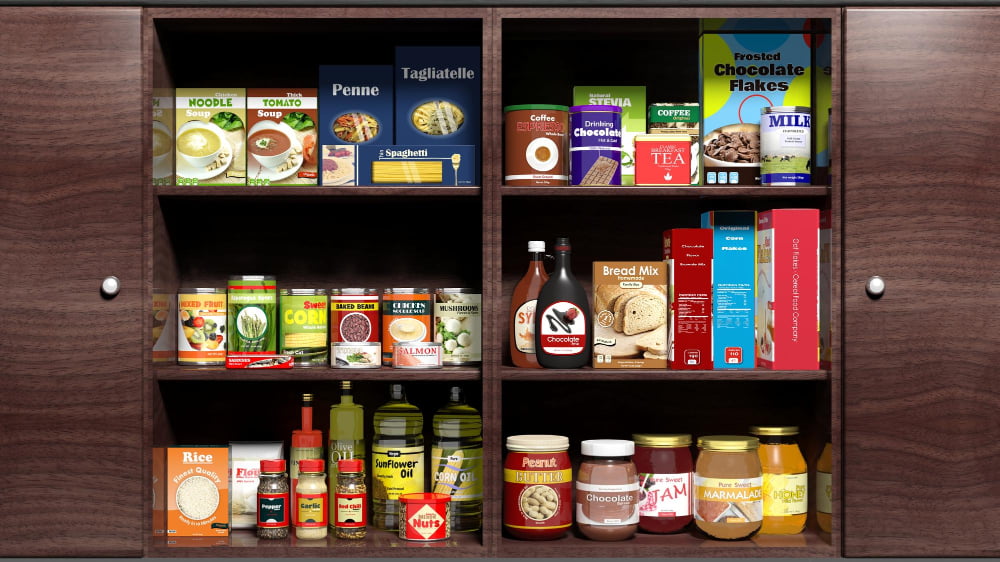
Before deciding on the spacing of your shelves, you need to assess what items you will be storing in your pantry and how much space they require. For instance, canned goods are a staple in most pantries and typically require more vertical space than horizontal.
On the other hand, boxed or bagged items like pasta or cereal can be stored horizontally.
Assessing your common pantry items also helps determine shelf height placement for maximum efficiency. If you have tall bottles of oil or vinegar that won’t fit on a standard shelf height placement then customizing the spacing between shelves may be necessary.
Another important factor when assessing common pantry item storage is accessibility; frequently used products should always be within easy reach while less commonly used ones can go higher up where they won’t get in the way.
Organizing and Storing Small Items
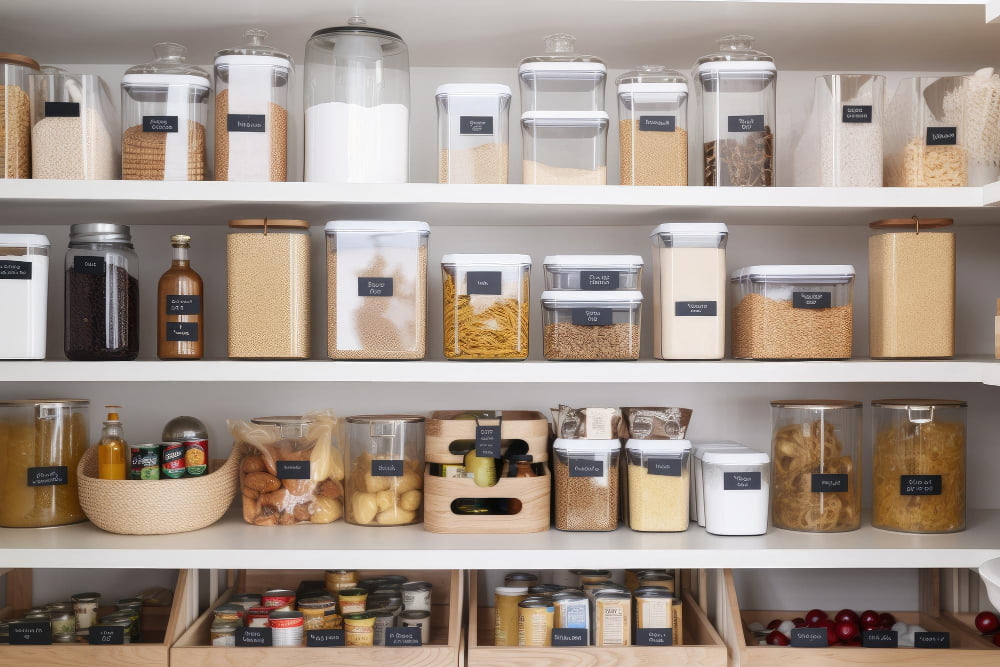
These items tend to get lost in the shuffle or take up too much space on larger shelves. To keep these small items organized and easily accessible, consider using drawer inserts or baskets that fit snugly on your pantry shelves.
Drawer inserts are perfect for storing spice jars and other small containers. They come in various sizes and materials such as bamboo or plastic so you can choose one that fits your needs best.
Baskets are also great for storing smaller food packages like tea bags, soup mixes or snack bars.
To make sure everything is easy to find when you need it, label each basket with its contents using clear labels or chalkboard tags attached with twine ties.
Tips for Storing Tall Items and Using Corner Shelves
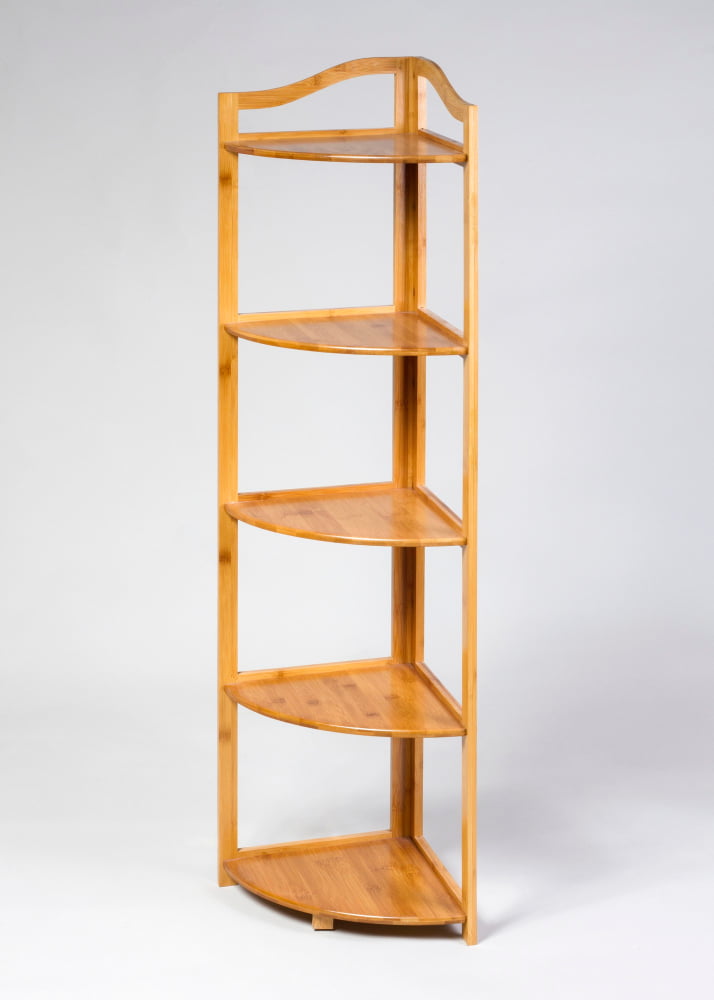
With the right shelf spacing and placement, you can easily store these items without sacrificing valuable space. One solution is to use corner shelves that allow for easy access to all your pantry essentials while maximizing storage capacity.
To make the most of your corner shelves, consider using lazy susans or turntables that rotate 360 degrees for easy access. These accessories are perfect for storing spices or condiments in small jars or containers.
For taller items like cereal boxes and soda bottles, adjust the height of your shelves accordingly so they fit snugly without wasting any vertical space. You may also want to consider installing pull-out drawers on lower shelves where you can store heavier items like cans or bags of flour.
Another tip is to group similar-sized tall items together on one shelf so you don’t have empty spaces between them which could lead to wasted space above them.
Choosing the Right Shelf Depth

The depth of your shelves will determine how much space you have for storing items and how easily accessible they are. A standard shelf depth ranges from 12 to 16 inches, but this may not be suitable for all pantry items.
For example, if you plan on storing large appliances or bulky food containers in your pantry, deeper shelves may be necessary. On the other hand, if you have limited space or want to store smaller items like spices and condiments efficiently, shallower shelves might work better.
It’s important to consider both functionality and aesthetics when selecting a shelf depth that works best for your needs. You don’t want deep shelves that make it difficult to reach items at the back or shallow ones that waste valuable storage space.
Designing Walk-in Pantry Shelves
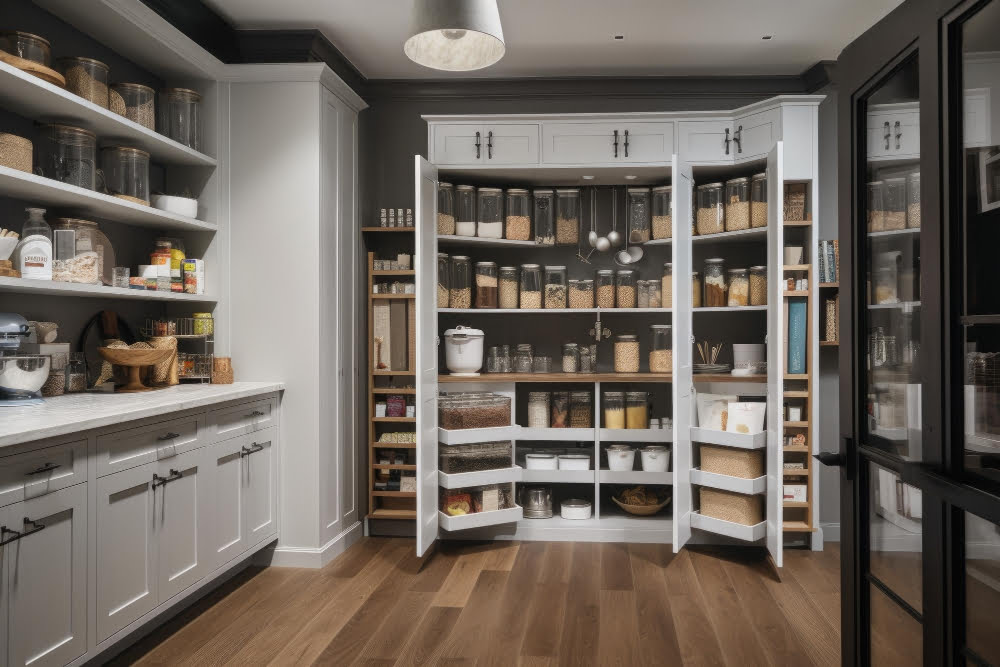
It can be challenging to design shelves that maximize storage and organization while still allowing easy access to all your items. Here are some tips for designing walk-in pantry shelves:
1. Assess your needs: Before designing your shelves, take an inventory of what you plan on storing in the pantry and how much space each item requires.
2. Consider shelf depth: For larger items like appliances or bulk food containers, deeper shelving may be necessary.
3. Use adjustable shelving: Adjustable shelving allows for flexibility as your storage needs change over time.
4. Utilize vertical space: Tall items such as brooms or mops can be stored on hooks attached to the walls or ceiling of the pantry.
5. Incorporate drawers and baskets: Drawers and baskets provide additional storage options for smaller items like snacks or spices that might get lost on open shelves.
Installing Wall-mounted Pantry Shelves
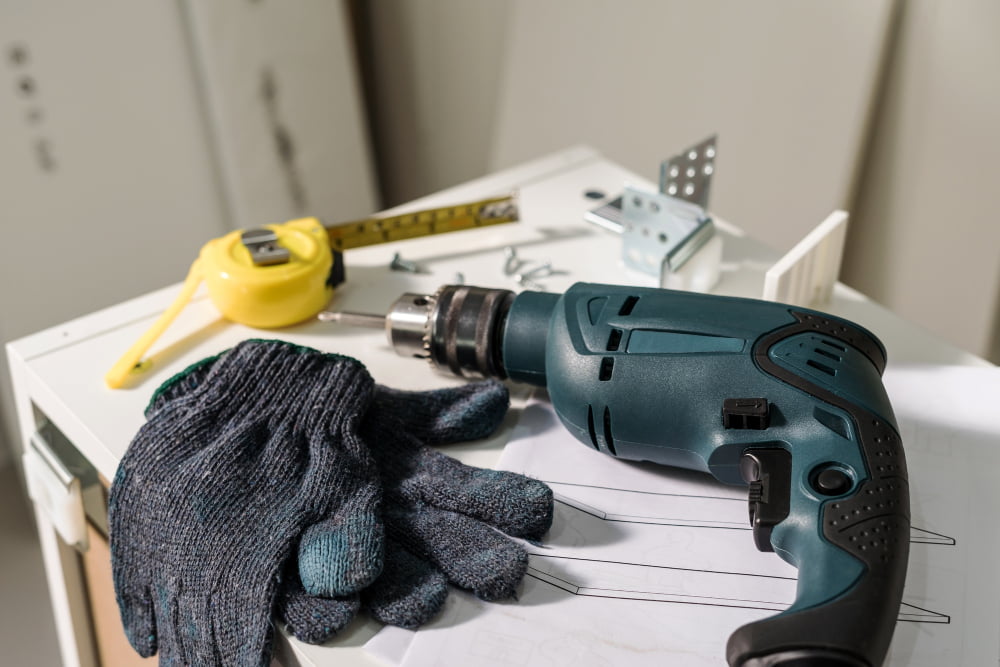
These shelves can be installed on any wall, and they come in various sizes and materials to suit your needs. When installing wall-mounted pantry shelves, it’s essential to consider the weight capacity of the shelf brackets and ensure that they are securely anchored into the wall studs.
To install these types of shelves, you will need a few tools such as a drill, leveler, screws or anchors depending on your walls’ material (drywall vs concrete), measuring tape among others. It is also important to measure accurately before drilling holes into your walls so that you don’t end up with unevenly spaced shelving units.
Once you’ve determined where you want your new pantry shelving unit(s) placed on the wall(s), use a leveler tool horizontally across each bracket location before marking them with pencil marks for accuracy purposes when drilling holes later on during installation process.
Considering Weight Capacity for Shelves
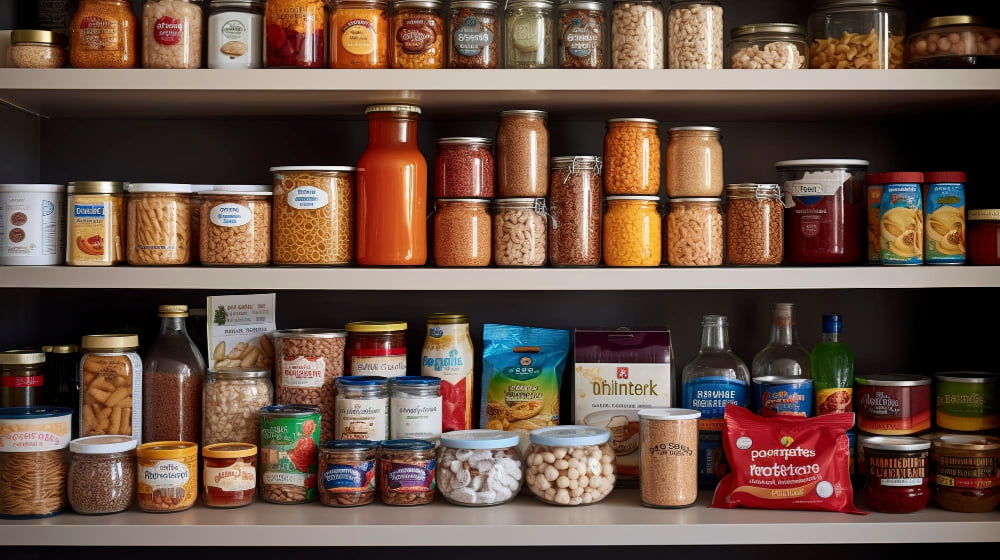
Overloading your shelves can lead to sagging or even collapsing, which can damage your pantry items and create a safety hazard. Therefore, it’s important to consider the weight capacity of each shelf before placing heavy items on them.
Most standard pantry shelving units have a maximum load capacity of 50-100 pounds per shelf. However, this may vary depending on the material and thickness of the shelves as well as their size and spacing.
To ensure that you don’t exceed the weight limit for each shelf in your pantry space, start by weighing all large or bulky items such as canned goods or kitchen appliances before placing them on any given shelf. This will help you distribute heavier objects evenly across multiple shelves instead of overburdening one single area.
If you’re unsure about how much weight your current shelving unit can handle safely or if you plan to store particularly heavy items like bags of flour or sugar in bulk quantities regularly; consider investing in reinforced brackets for added support under individual sections where necessary.
Categorizing and Labeling Pantry Shelves
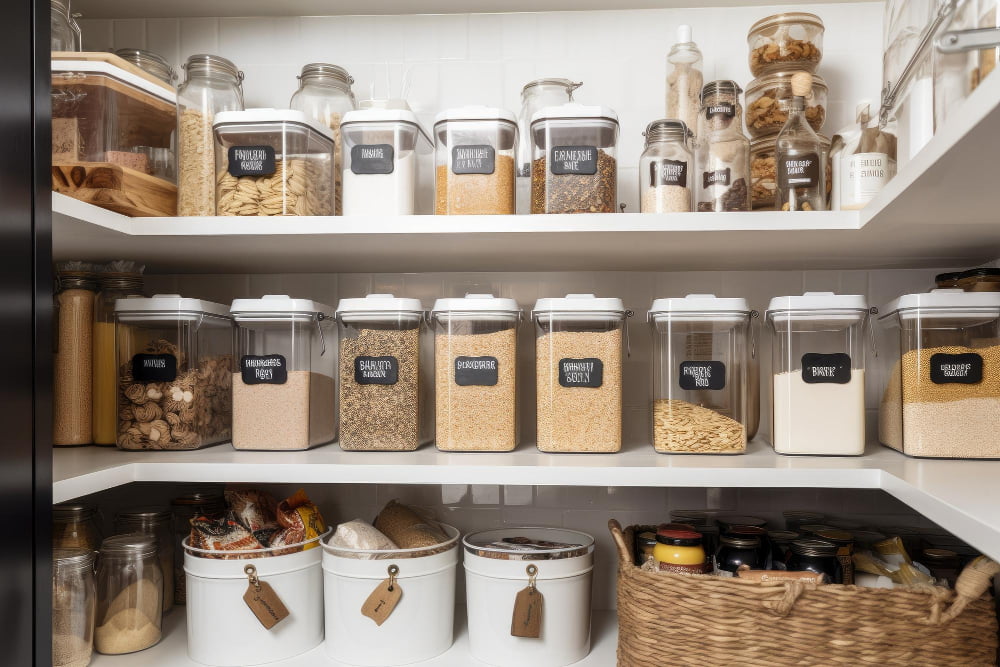
This step is crucial in maintaining an organized pantry space. Categorization helps you find items quickly, while labeling ensures that everything goes back to its designated spot.
Start by grouping similar items together such as canned goods, baking supplies, snacks or breakfast foods. You can also create a separate section for spices or condiments if needed.
Once you’ve categorized your items into groups that make sense to you, assign each group a shelf or area in the pantry.
Labeling is equally important as categorization because it eliminates confusion about where things belong and makes restocking easier for everyone who uses the kitchen. Use clear labels on each shelf with bold lettering so they are easy to read from afar.
You can use different types of labels depending on what works best for your needs – adhesive stickers work well on plastic containers while chalkboard paint allows flexibility when changing up contents frequently.
Proper Maintenance and Inspection of Shelves
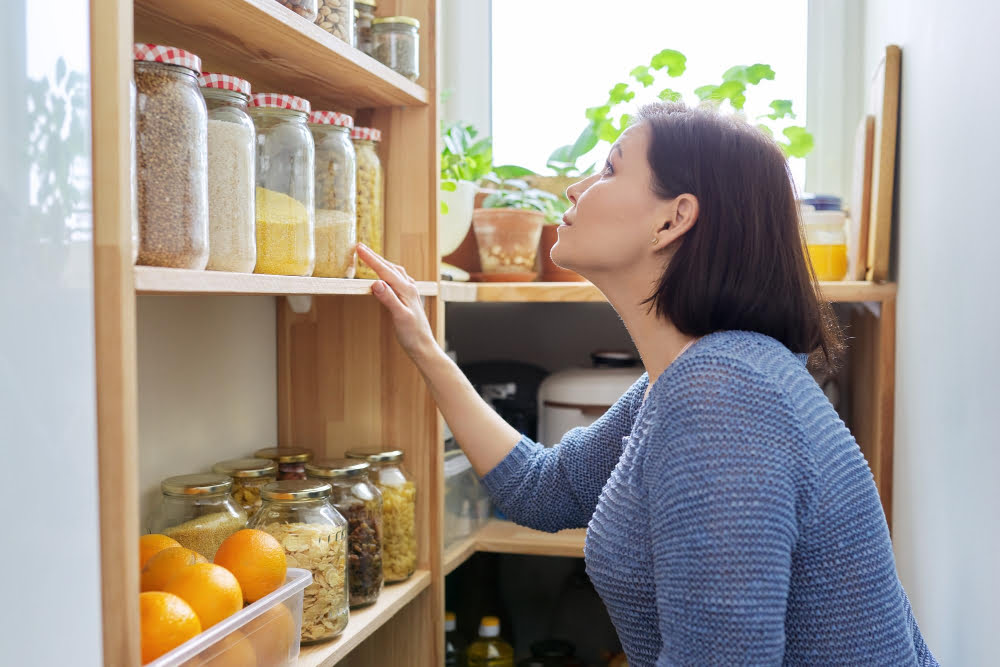
Proper maintenance and inspection of shelves can help prevent accidents and ensure that they last for a long time. It is recommended to inspect the shelves at least once every six months or after any significant changes in weight or usage.
During inspections, check for signs of wear and tear such as cracks, warping, sagging or bending. If you notice any damage on the shelf surface or brackets, replace them immediately before they cause an accident.
It’s also essential to keep your pantry clean by wiping down the surfaces with a damp cloth periodically. Avoid using harsh chemicals that may damage the shelf material over time.
In addition to regular cleaning and inspection routines, consider organizing items based on their weight distribution so that heavier items are placed at lower levels while lighter ones are stored higher up on top shelves.
Weighing the Pros and Cons of DIY Vs Professional Installation

While the former may seem like a cost-effective solution, it’s important to weigh the pros and cons before making a decision.
DIY installation can be an excellent choice if you’re handy with tools and have experience in carpentry. It allows for greater flexibility in terms of design and customization while also saving money on labor costs.
However, keep in mind that this option requires time, effort, patience as well as some level of expertise.
On the other hand, professional installation offers convenience and peace of mind knowing that your shelves are installed correctly by experts who know what they are doing. They will ensure proper spacing between each shelf according to your needs while taking into account any potential issues such as uneven walls or floors.
However hiring professionals can be expensive compared to DIY installations which could lead one into spending more than necessary especially when working with tight budgets.
Utilizing Pantry Storage Accessories
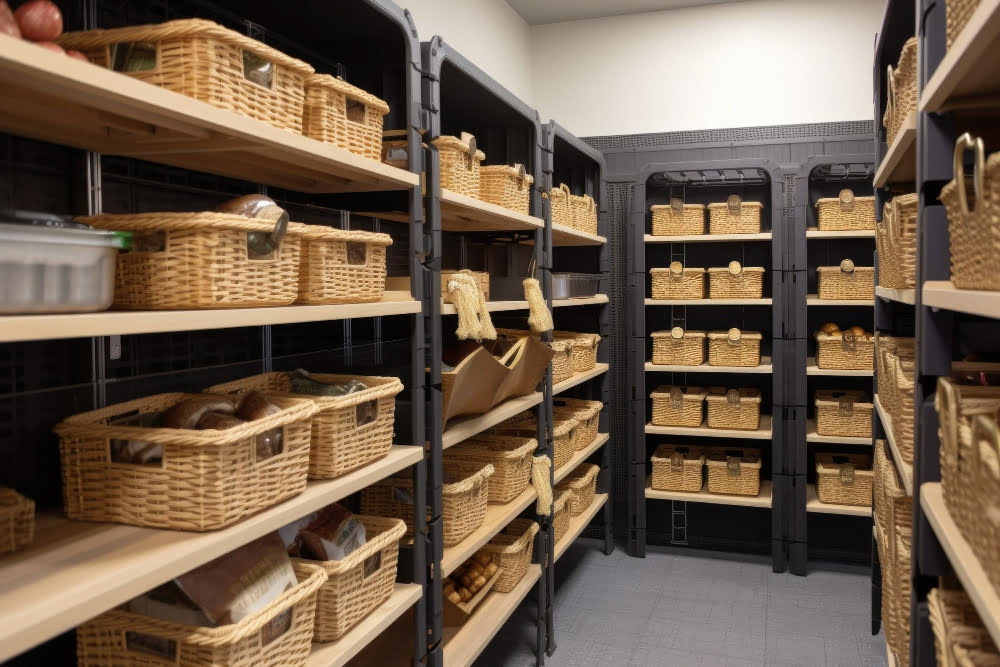
There are a variety of accessories available on the market that can be used to store different types of items in your pantry.
For example, you may want to consider using pull-out baskets or drawers for storing small items such as snacks or spices. These baskets and drawers make it easy to access these items without having them clutter up your shelves.
Another popular accessory is a lazy Susan turntable which allows you to easily access all the contents on a shelf with just one spin. This is particularly useful for corner shelves where it can be difficult to reach everything stored there.
Door-mounted organizers are also great options for maximizing space in smaller pantries. You could use them for storing condiments, jars, or even cleaning supplies if needed.
Making the Most of Vertical Space in Your Pantry
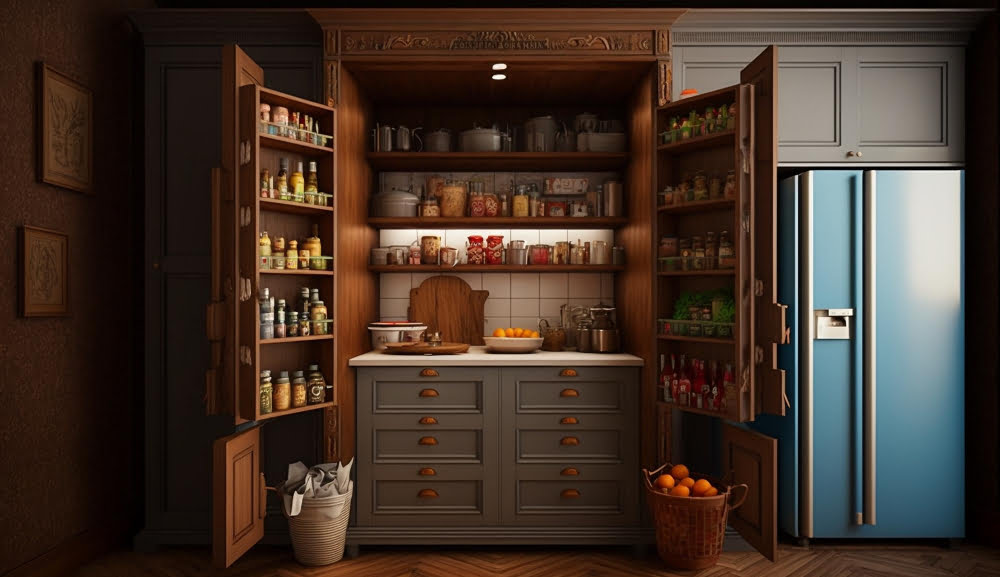
Vertical storage can help you maximize your pantry’s capacity and keep everything within reach. One way to make the most of your vertical space is by installing tall shelves that go all the way up to the ceiling.
These shelves are perfect for storing items that are used less frequently or for bulkier items like cereal boxes or kitchen appliances.
Another great option for maximizing vertical space in your pantry is using over-the-door organizers or hanging baskets on unused walls and doors. These organizers come in various sizes and shapes, making them ideal for storing small packets of spices, snacks, condiments, and other small items.
If you have a walk-in pantry with high ceilings but limited floor space, consider adding a rolling ladder system that allows easy access to higher shelves without having to climb on stools or chairs.
Enhancing Shelf Aesthetics and Design
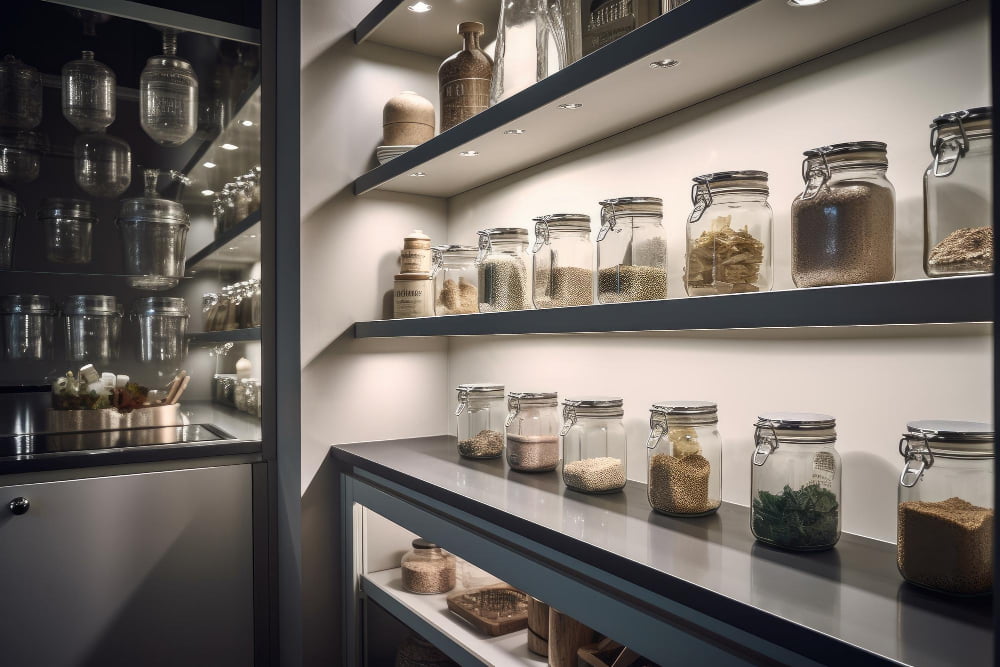
After all, a well-designed pantry can add value to your home while also making it more enjoyable to use. When designing your pantry shelves, consider incorporating elements that complement the overall style of your kitchen or home decor.
One way to enhance shelf aesthetics is by using decorative brackets or corbels for support instead of plain metal ones. You can find these in various styles such as vintage-inspired designs or sleek modern shapes that will add character and charm to any space.
Another option is adding lighting under each shelf level which will illuminate items on display while creating an inviting ambiance in the room. LED strip lights are easy-to-install options that come with adhesive backing for quick installation.
Lastly, don’t forget about color coordination when organizing items on your shelves! Grouping similar colored containers together creates a cohesive look while also making it easier to locate specific ingredients at a glance.
By taking into account both function and design when spacing out your pantry shelves you’ll create an organized space that’s both practical and visually appealing!
FAQ
How far apart should shelves be in a pantry?
In a pantry, bottom shelves should be spaced 18-24 inches apart, eye-level shelves 14-16 inches apart, and shelves for spices and cans may require no more than 6 inches front-to-back.
How wide should a pantry be for shelves on both sides?
A pantry with shelves on both sides should be at least 76 inches wide.
How high should storage shelves in a pantry be from the floor?
Storage shelves in a pantry should be at least 6 inches above the floor, excluding unopened bulk containers.
What is a good size walk in pantry?
A good size walk-in pantry is at least 5 feet wide and 5 feet long, as this provides enough space for shelves, optional countertops, and a minimum 36-inch walkway for one person.
What is the optimal depth for pantry shelves to maximize storage and accessibility?
The optimal depth for pantry shelves to maximize storage and accessibility is 16 to 20 inches.
How should pantry shelves be arranged to accommodate items of different heights efficiently?
Arrange pantry shelves by placing taller items on the lower shelves and shorter items on the higher shelves for efficient accommodation of different heights.
Are there specific materials recommended for pantry shelving to ensure durability and easy maintenance?
Recommended materials for durable and easily maintained pantry shelving include wood, metal, and wire shelving options.
Recap:
